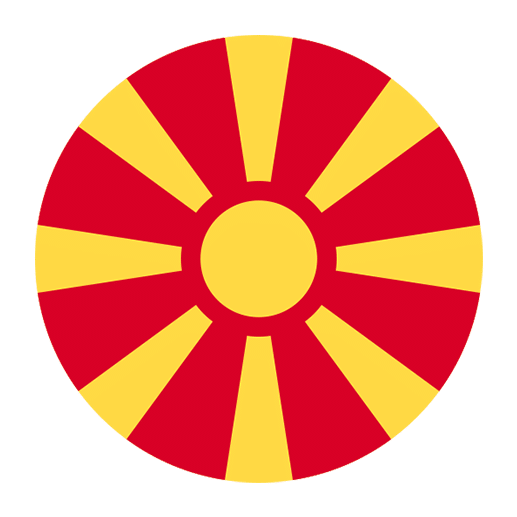Teaching a new language to children can be both a rewarding and challenging experience. When it comes to teaching Macedonian, a South Slavic language spoken primarily in North Macedonia, the process can be enriched by incorporating various methods and techniques that cater to young learners. This guide aims to provide a comprehensive approach to teaching Macedonian to children, emphasizing practical strategies, engaging activities, and cultural immersion.
Understanding the Basics of Macedonian
Before diving into teaching methods, it’s essential to grasp the fundamentals of the Macedonian language. Macedonian uses the Cyrillic script, which can be a new experience for English-speaking children. The language has a rich phonetic system with 31 letters, each representing a unique sound. Introducing these letters and their corresponding sounds is the first step in building a strong foundation.
Alphabet and Pronunciation
Start with the Macedonian alphabet, known as the азбука (azbuka). Create flashcards with each letter and its phonetic sound. Engage children with songs and rhymes that incorporate the alphabet, making it easier for them to remember. For example, you can use a song similar to the English “ABC” song but adapted to the Macedonian alphabet.
Example:
А – /a/ as in “apple”
Б – /b/ as in “bat”
В – /v/ as in “van”
Г – /g/ as in “go”
Introduce pronunciation exercises through games. For instance, play a “sound scavenger hunt” where children find objects around the house that start with a specific letter. This not only reinforces letter recognition but also helps with pronunciation.
Building Vocabulary
Vocabulary development is crucial in language learning. For children, it’s important to introduce new words in a fun and engaging manner.
Thematic Vocabulary Lists
Create thematic vocabulary lists based on everyday topics such as family, food, animals, and school. Use pictures and flashcards to make the learning process interactive.
Example:
Family:
Мајка (Majka) – Mother
Татко (Tatko) – Father
Брат (Brat) – Brother
Сестра (Sestra) – Sister
Incorporate these words into short, simple sentences to provide context. For instance, “Ова е мојата мајка” (This is my mother).
Interactive Games
Games are an excellent way to reinforce vocabulary. Consider activities such as memory matching games with pictures and words, or a bingo game where children have to match the spoken word with the correct image on their bingo card.
Another effective game is “Simon Says” in Macedonian. This not only helps with vocabulary but also with listening skills. For example, “Симо вели, скокни!” (Simon says, jump!).
Grammar and Sentence Structure
While vocabulary is essential, understanding grammar and sentence structure is equally important. For children, the key is to introduce these concepts gradually and in context.
Basic Sentence Construction
Start with simple sentence structures, focusing on subject-verb-object (SVO) order, which is common in Macedonian. Use familiar vocabulary to create simple sentences.
Example:
Јас јадам јаболко (Jas jadam jabolko) – I eat an apple.
Gradually introduce more complex sentences by adding adjectives and additional nouns. For instance, “Јас јадам црвено јаболко” (I eat a red apple).
Verb Conjugation
Introduce basic verb conjugations by focusing on commonly used verbs such as “to be” (бити) and “to have” (има). Use songs, rhymes, and repetitive exercises to reinforce these conjugations.
Example:
Јас сум (Jas sum) – I am
Ти си (Ti si) – You are
Тој/Таа е (Toj/Taa e) – He/She is
Practice these conjugations in context by creating simple dialogues. For example, “Јас сум ученик” (I am a student) and “Ти си учител” (You are a teacher).
Listening and Speaking Skills
Developing listening and speaking skills is crucial for language acquisition. Encourage children to listen to native speakers and practice speaking as much as possible.
Listening Activities
Use audio resources such as children’s songs, stories, and educational videos in Macedonian. Websites like YouTube offer a variety of Macedonian content for children. After listening, ask comprehension questions to ensure they understand the material.
Example Questions:
Што направи момчето? (What did the boy do?)
Каде оди девојката? (Where is the girl going?)
Speaking Practice
Create opportunities for children to speak Macedonian in a supportive environment. Encourage them to describe their day, talk about their favorite activities, or narrate a simple story.
Role-playing is another effective method. Set up scenarios such as going to a market, visiting a friend, or attending school, and have children practice dialogues in Macedonian.
Reading and Writing Skills
Reading and writing are essential components of language learning. Introduce these skills gradually, starting with simple texts and progressing to more complex ones.
Reading Exercises
Begin with picture books and short stories that include familiar vocabulary. Read aloud to children, pointing to the words as you say them. This helps with word recognition and pronunciation.
As children become more confident, encourage them to read aloud. Provide books with larger fonts and colorful illustrations to maintain their interest.
Writing Activities
Start with tracing exercises to help children become familiar with the Cyrillic script. Provide worksheets where they can trace letters and simple words.
Progress to writing simple sentences. Use prompts such as “Моето име е…” (My name is…) and “Јас живеам во…” (I live in…). Encourage creative writing by having children write short stories or describe their favorite activities in Macedonian.
Incorporating Culture
Language learning is deeply intertwined with cultural understanding. Introducing cultural elements makes the learning process more engaging and meaningful.
Cultural Activities
Celebrate Macedonian holidays and traditions with children. For example, during the New Year (Нова Година), teach them traditional songs and dances. Prepare Macedonian dishes together, like ajvar or tavče gravče, and learn the corresponding vocabulary.
Multimedia Resources
Utilize multimedia resources to expose children to Macedonian culture. Watch Macedonian cartoons, listen to traditional music, and explore virtual tours of North Macedonia. Discuss what they see and hear, reinforcing new vocabulary and cultural knowledge.
Utilizing Technology
In today’s digital age, technology can be a powerful tool for language learning. Incorporate apps, online games, and interactive resources to make the learning process dynamic and engaging.
Language Learning Apps
There are several apps designed for language learning that offer Macedonian. These apps often include games, quizzes, and interactive exercises that cater to children’s learning styles. Examples include Duolingo, Memrise, and LingQ.
Online Resources
Websites such as YouTube and educational platforms offer a wealth of resources for learning Macedonian. Look for channels and websites dedicated to teaching Macedonian to children, which often include songs, stories, and interactive activities.
Consistency and Patience
Learning a language is a gradual process that requires consistency and patience. Set realistic goals and celebrate small achievements along the way.
Regular Practice
Incorporate Macedonian into daily routines. Set aside dedicated time each day for language practice, whether it’s through reading, writing, speaking, or listening activities. Consistency is key to retention and progress.
Positive Reinforcement
Encourage and praise children for their efforts and achievements. Use positive reinforcement to build their confidence and motivation. Celebrate milestones, such as learning a new set of vocabulary or successfully holding a conversation in Macedonian.
Conclusion
Teaching Macedonian to children can be a fulfilling experience that opens up new cultural and linguistic horizons. By using a variety of methods and resources, you can create an engaging and supportive learning environment. Remember to be patient, celebrate progress, and most importantly, make the learning process fun and enjoyable. With time and dedication, children will develop a strong foundation in Macedonian that will serve them well in their future linguistic endeavors.

